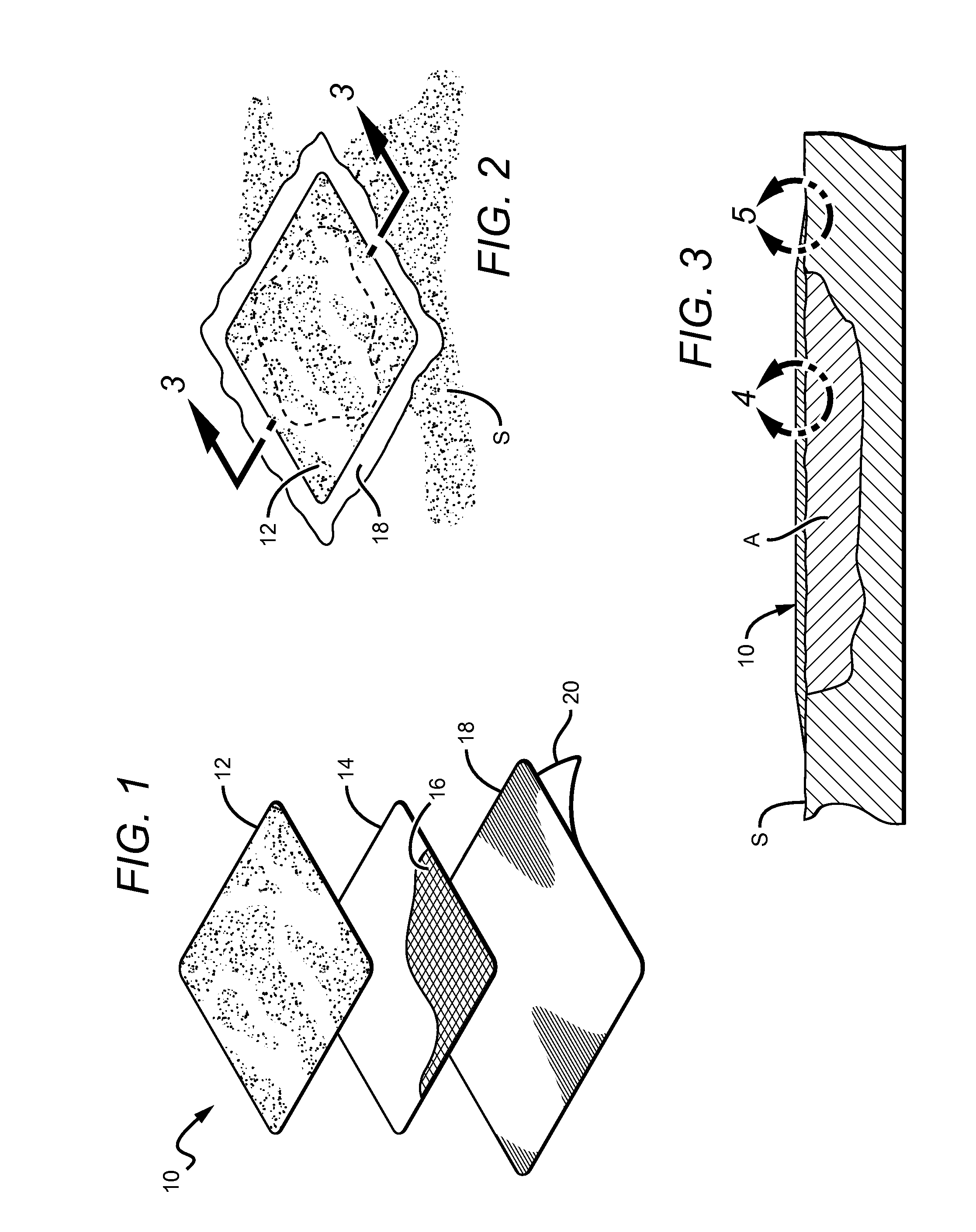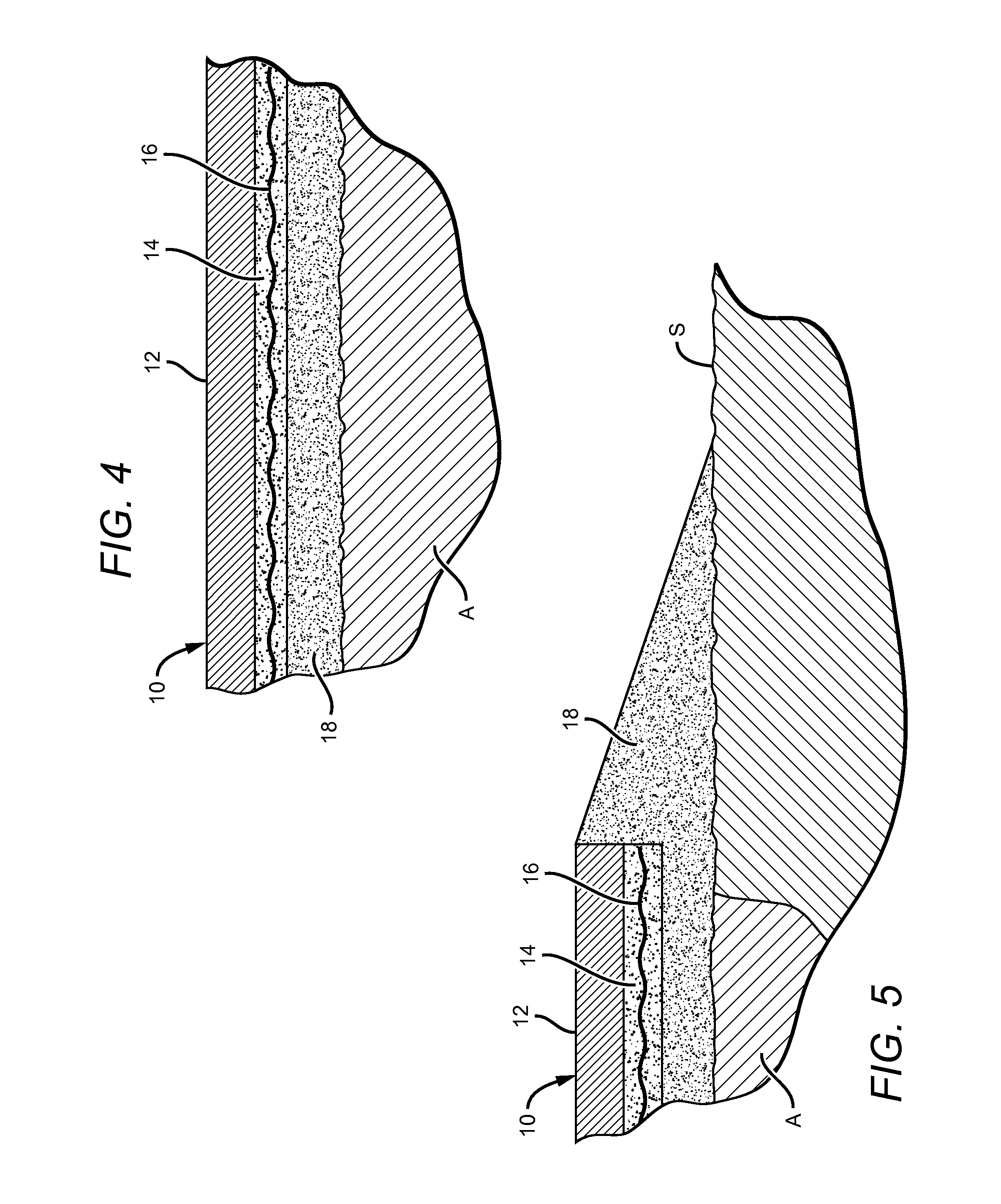Pothole and utility cut repair overlay and method of installation
a technology for utility cuts and repairs, applied in the field of pothole and utility cut repairs, can solve the problems of forming potholes and damage caused by utility cuts, reducing the service life of utilities, so as to achieve convenient separation for use and sufficient internal strength
- Summary
- Abstract
- Description
- Claims
- Application Information
AI Technical Summary
Benefits of technology
Problems solved by technology
Method used
Image
Examples
Embodiment Construction
[0041]FIG. 1 illustrates my laminated overlay 10 for pothole repair. It is to be understood that the figures presented are not to any scale and are provided for a general understanding of the overlay structure and method of use.
[0042]As used herein, the term “about” means 10% plus or minus of the stated value.
[0043]Overlay 10 has a top wear layer 12 comprising a top surface of stone frit filler embedded in a 1 / 16-⅛ inch thick modified asphalt which could be also reinforced with fiber. A structural reinforcement layer 14 is comprised of viscous bitumen blended with oriented fibrous material and further having encapsulated oriented fibers 16 with an overall layer thickness of about 1 / 16 inch. A bottom sealant layer 18 comprises about ⅛ inch thick bitumen. A peel-off non-stick film backing 20 is affixed to the lower surface of sealant layer 18 and which is removed prior to application.
[0044]FIG. 2 illustrates the position of overlay 10 on a road surface S once installation is complete....
PUM
| Property | Measurement | Unit |
|---|---|---|
| viscous | aaaaa | aaaaa |
| color | aaaaa | aaaaa |
| volume | aaaaa | aaaaa |
Abstract
Description
Claims
Application Information
 Login to View More
Login to View More - R&D
- Intellectual Property
- Life Sciences
- Materials
- Tech Scout
- Unparalleled Data Quality
- Higher Quality Content
- 60% Fewer Hallucinations
Browse by: Latest US Patents, China's latest patents, Technical Efficacy Thesaurus, Application Domain, Technology Topic, Popular Technical Reports.
© 2025 PatSnap. All rights reserved.Legal|Privacy policy|Modern Slavery Act Transparency Statement|Sitemap|About US| Contact US: help@patsnap.com



